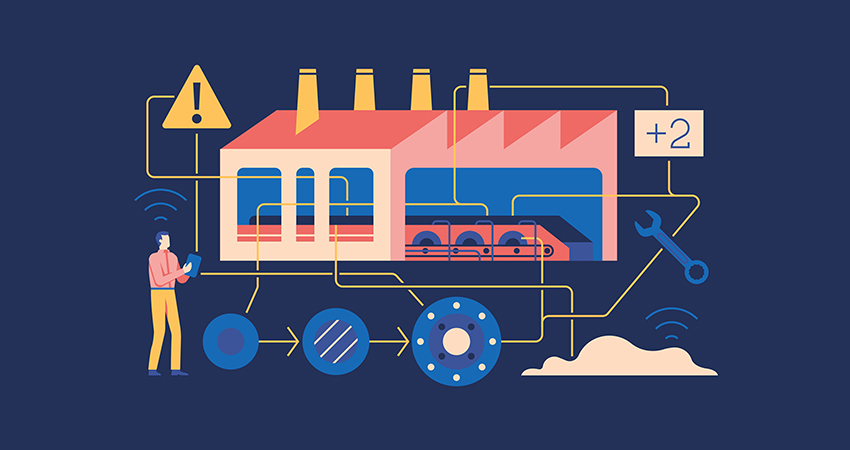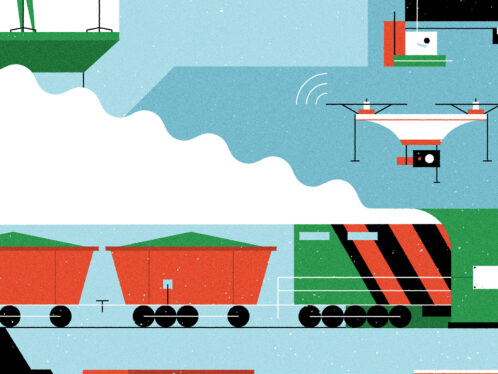
Digitalization: Picking the right tools for the job
Around the world Industry 4.0 is revolutionizing the way goods are produced and delivered; in response companies are racing towards digitalization in an attempt to stay ahead of the pack. But taking a slower, more considered approach may be a better option, enabling them to carefully pick products from a digital toolbox.
Digitalization with SKF Rotating Equipment Performance
- Assess
Providing practical advice, informed by evaluating and benchmarking, to achieve targets for machine availability, production, maintenance and cost of ownership. - Detect
Monitoring critical plant and equipment performance to avoid costly unplanned downtime and lost production. - Maintain
Using the right tools and mechanical services for day-to-day maintenance activities. - Solve
Addressing problems and preventing recurrence. Using intuitive analytics dashboards to drive a performance-based approach. - Rebuild
Refreshing equipment using a full suite of remanufacturing functions. This reduces maintenance costs, improves reliability, maximizes uptime and lowers environmental impact.
Companies must use digitalization to boost efficiency, improve product quality and streamline supply chains.
“It’s about realizing the shift from value chain to a circular approach in an efficient and scalable way, gathering the right data from assets and processes,” says Hernández. “We then generate tangible and usable insights for our customers. The power of analytics lies in creating leaner processes and greater transparency and in reducing errors. Careful selection of digital tools together with first-rate analytics can lead to a return on investment through lower price points, better asset monitoring and leveraging of open source code for growth.”
For Swiss grocer Migros, digitalization of supply chain logistics led to the development of an “iterative forecasting” model, involving repeated analysis. In operation, this improved product quality as wholesaler picking could begin before stores had even placed orders – a critical factor in an industry where efficiency is achieved through timeliness and freshness.
Analytics tools are key for many operators when targeting their sales growth. The Apptus eSales solution analyses the link between a customer’s intent to buy and the realization of sales. In Sweden, Bokus.com already uses Apptus’s predictive understanding of consumers to produce “digital personalized recommendation newsletters”. The eCommerce company reported its average turnover increased 100 percent for customers who received these individualized recommendations.

There’s also a perception that digitalization is a young company’s game. A 2018 study by Forrester Consulting on behalf of multinational software giant SAP found that “88 percent of innovative manufacturers had started or completed their digital transformation, compared to 54 percent of other companies”. This digital hesitation is not without reason, as digitalization requires a significant cultural shift, raising such questions as: How will digitalization change work in the future? Will openness and increased transparency place services under greater scrutiny? What about too much digitalization and the growing data protection requirements? Which party owns the data in a collaboration, and what assurances can be provided that only the necessary data is shared?
The power of analytics lies in creating leaner processes and greater transparency and in reducing errors.
Freddy Hernández, director of product management, Rotating Equipment Performance, SKF
Digitalization opens the door for new areas of regulation and asks who will ultimately bear the responsibility for the actions of automated machines. All these issues can only be solved through a collaborative and corporately led approach.
What about the future? “It will be all about our customers, ensuring that we address pain points to keep their processes running continuously,” Hernández says. Targeted digitalization empowers industry to produce customer-centric, digitally smart, personalized goods and services. Yet the biggest growth market is being seen in servitization, where companies sell complete solutions rather than merely finished products. This often includes the infrastructure needed to gather, process and act on data as part of an entire service package.
Dutch manufacturer Philips does just this at Schiphol airport in Amsterdam, providing lighting as a service. At the same time it works with Schiphol to achieve its corporate sustainability ambitions by creating a digital ecosystem that guarantees maximum performance and value from the lighting system. In the consumer sector, Apple saw the digitalization of the music industry as far back as 2001, launching iTunes to complement the iPod launched that same year. At SKF, Hernández points us towards the company’s centrepiece service offering, explaining, “Rotating Equipment Performance delivers reliable rotation, maximizes savings and drives improvements by bringing together our knowledge and expertise through connected technologies.
“The speed to deliver new innovations is critical,” he continues, “but we can only achieve this by focusing on what really matters to our customers and adding real value in a scalable way.” As industry sets out on its digitalization journey, what matter most are pragmatic solutions, the right products and the best collaborations – providing companies with everything they need, nothing they don’t.




